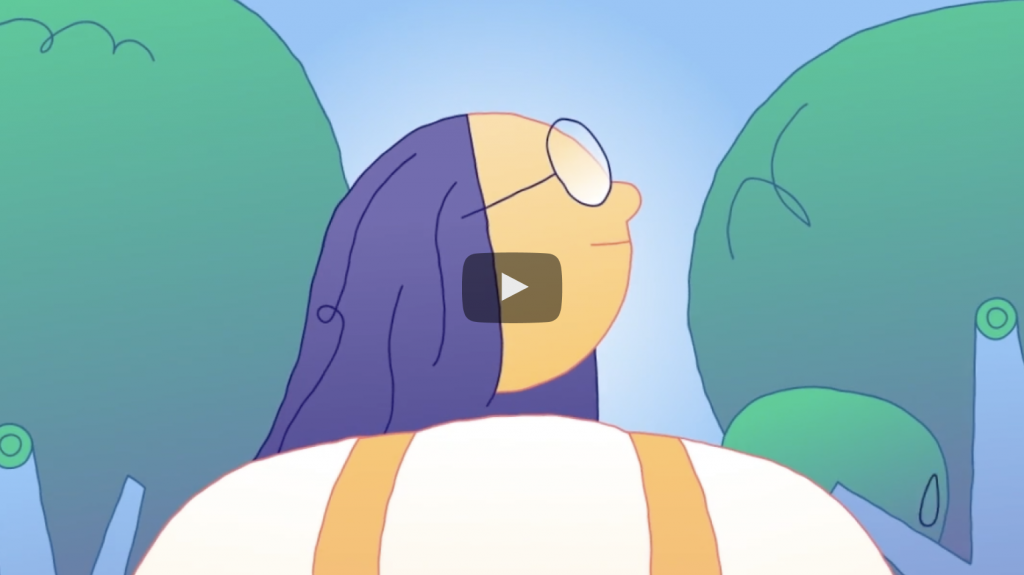Sometimes, it’s hard to smile, especially if you’re feeling sick, tired or blue. But research shows that the physical act of smiling — and the release of feel-good chemicals it generates — can do your body good. It can lift your mood, lower stress, strengthen your immune system and possibly help you live longer.
Narrator:
We have lots of thoughts all day long. We think about a text we wish we hadn’t sent. We think about what we need at the grocery. We imagine what the world would be like if dogs could talk. These are all thoughts. Some unpleasant, some neutral, and some pleasant.
For the most part, our thoughts come and go and we hardly notice. Some thoughts bring action like, “I think I want some chips”, or “I should call that person”. Some thoughts bring feelings of joy, like thinking about a vacation you have coming up or watching videos of kittens. But other thoughts, the ones we probably want to let go of the most can bring on feelings of stress, fear, remorse, grief and more.
It’s important to be with our feelings, but sometimes the thoughts that trigger those feelings are inaccurate. And even though feelings are accurate, sometimes we may want to respond to them a little differently than we feel.
So how do you let go of a thought before it becomes a distraction? Here are some real-life examples so you can practice the “See, Be, Free” technique out in the world.
Have you ever been in traffic and had someone cut in front of you? Or had someone bump into you and then carry on without apologizing? You probably thought, “What a jerk”. That “What a jerk” then evolves into “Everyone is so rude today”. And before you know it, that thought is now tightness in your chest, tension in your muscles, and anger in your body.
Now you’re stuck feeling bad.
Sometimes, when we get stuck thinking about unpleasant things, we make them last longer and even let them lead us into saying or doing things we wish we hadn’t. In this scenario, the anger just makes our day worse.
So when your mind goes, “What a jerk”, and you feel the outrage, see the thought and then be with it. Don’t judge it or react to it, and then free the thought. Is it true? Does the thought help you? Maybe that person didn’t see you or maybe they were embarrassed. Even if that person was a jerk, it’s usually not worth ruminating on that thought and staying in that bad feeling.
Anxious thoughts can sometimes be hard to pinpoint, but you’re probably familiar with how anxious thoughts make you feel. If you notice that signature rush of anxiety, the sweaty palms, the shallow breaths, the tightness in your chest, that feeling of dread, notice what triggered that feeling and work from there. Did you read a text or an email you weren’t sure how to respond to? Maybe you heard some news that made you feel scared or maybe you felt fear about something upcoming, like a flight or a speech you’re meant to give.
Once you figure out the trigger, take a look at the thought. They’ll come in all shapes and sizes from, “I’m not good enough”, or “I always fail, everyone hates me and I should give up”. Those are just thoughts. Notice that they’re a thought. Say it out loud. That’s a thought. “I have thousands of thoughts and that’s just one of them, and I can let it go”. Then free the thought. Is it a repetitive thought that gives you anxiety, but usually turns out okay? Is it a fear of something that’s almost certainly not going to happen?
When we use the See, Be, Free technique, we can always come back to the skills we learned in meditation. Once you do your best letting go of the thought, bring your awareness just like you learned to your breath, to the soles of your feet, to whatever anchors you, and keep bringing your attention there until the thought becomes just another raindrop. No more interesting than any other. Just something to notice knowing it will pass and you don’t have to chase the storm.
Check out the resource below to build up your emotional well-being and feel more happiness, peace and empowerment.
*Not available in Puerto Rico.


